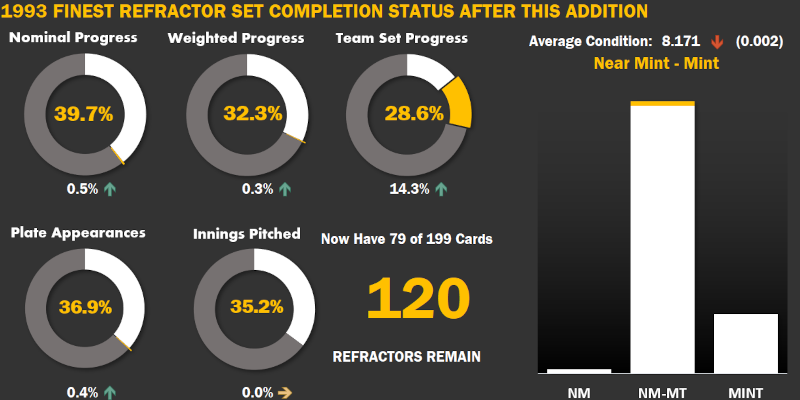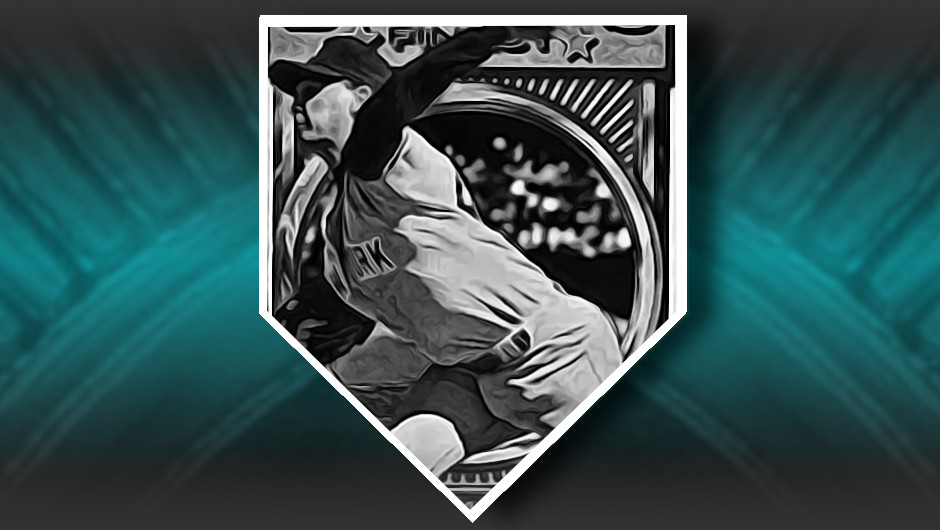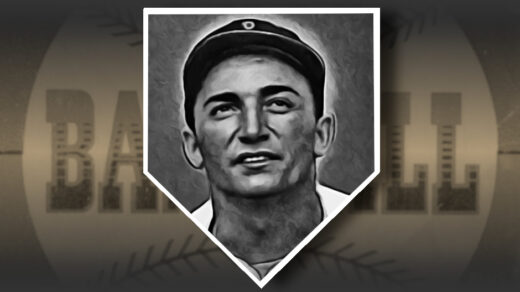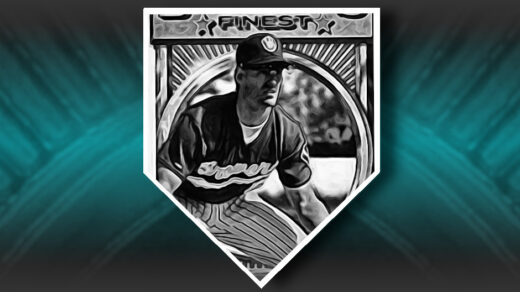No player is comfortable with the idea that talent alone carried him to the majors — it’s flattering in a way but damning in another. No player can make a greater claim than Borders to having made the major leagues by dint of hard work and Kevlar-plated resolve. Alone among the fixtures on those World Series teams, Borders feared for his job in the Jays organization. He didn’t lack for talent, but more than any of his teammates, his work ethic dwarfed his God-given abilities. Early on, it looked to him like he might not make it to Double-A. Which is to say that his pro baseball career almost ended at the same level he coaches these days, A-ball.
Gare Joyce, “The Lifer” – SportsNet
That’s a fitting summation of the career of 17-year veteran Pat Borders. He wasn’t the flashiest catcher in baseball and frequently had to outcompete minor league talent for a position at Spring Training. By my calculations he is actually the least effective of the 10 catchers appearing in the 1993 Finest set and it’s not even close. So why is he here? Why would Topps put him in its collection of the sport’s best players?
For starters, Borders was only a few seasons into his career when the checklist was drafted. The spark of “what if” was still present and nobody could accuse him of just coasting along without putting in the requisite work. His 1992 season was the best of his career. The key item in his favor was being named MVP in the recently concluded 1992 World Series. That award solidified his reputation and he still signs autographs to this day that include an inscription referencing the accolade. He had a habit of winning, not in the regular season, but when it counted the most: Championships. Borders turned in a second consecutive stellar performance in the 1993 World Series and won a gold medal with the 2000 US Olympic baseball team.
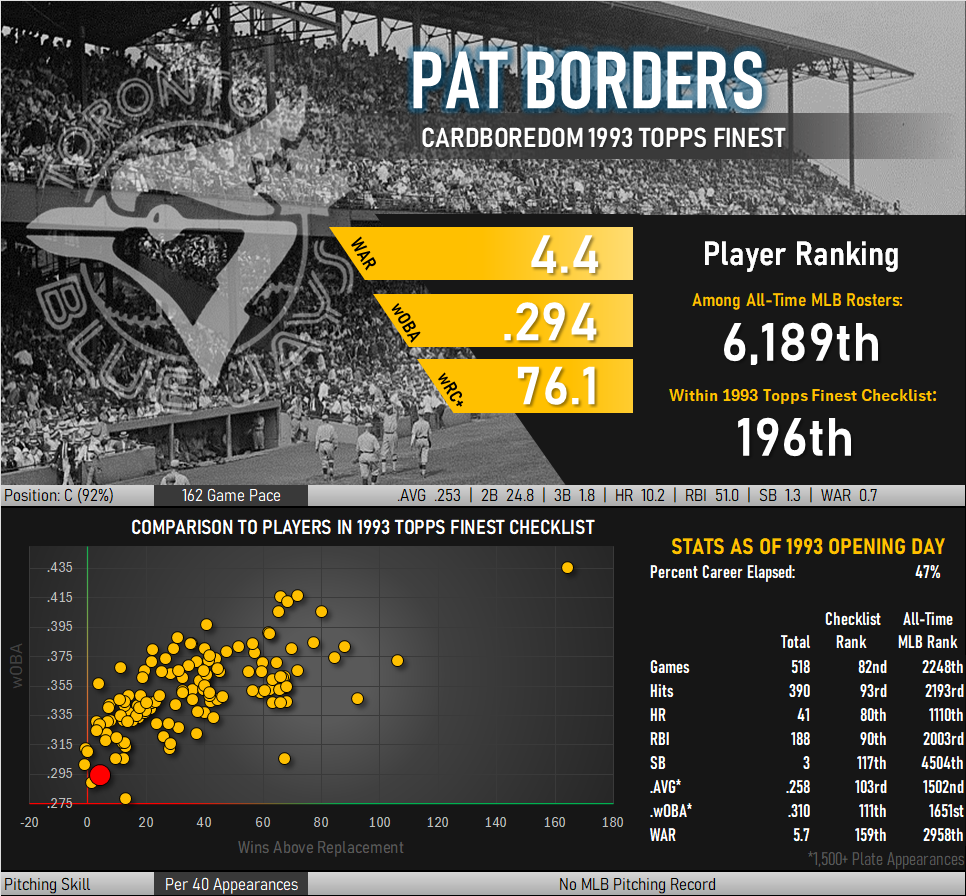
The 1993 Topps Finest Card
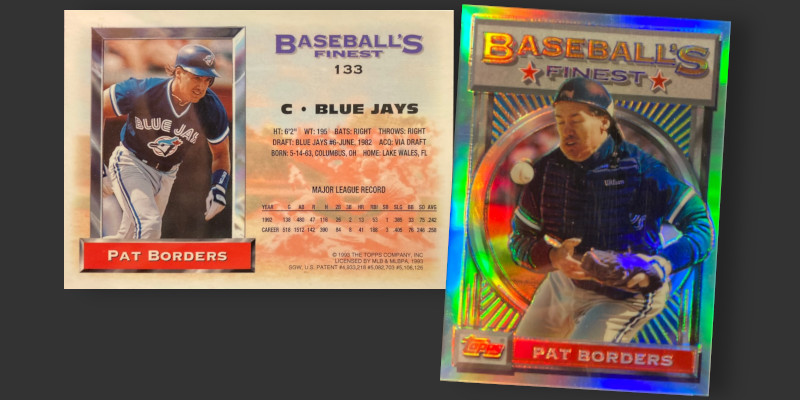
What’s going on in the front photo of Borders’ ’93 Finest card? At first glance it looks like he is bobbling a pitch and watching his career flash before his eyes as he frantically tries to capture the ball. A moment’s reflection shows this not to be the case, as clues appear to dispel the illusion. Borders is clearly wearing catching gear, but his mask is nowhere to be seen. This indicates that he has discarded it in an effort to locate the ball, a move that is seamlessly made by Major League catchers. The cutout nature of Finest photography does not let viewers see if the mask is still falling or is already down, so it is difficult to tell how much time has elapsed since a pitch was thrown. Borders is out of his defensive crouch and moving to his left, indicating the ball is in play along the third base foul line. An infield ball directed along this path is usually a bunt, so it appears Borders is seen getting a rare opportunity to field a ball in play.
This makes sense, but leaves me a bit disappointed. Why? Because I had a pet theory that would have been more fun. Topps is based in Philadelphia and had more than its share of hometown fans rooting for the Phillies against Borders’ Toronto Blue Jays in the 1992 World Series. As the Series MVP, the Toronto catcher would be a natural target for any pranks in Topps’ design department. If any player were to be shown on purpose bobbling a throw, this would be it.
